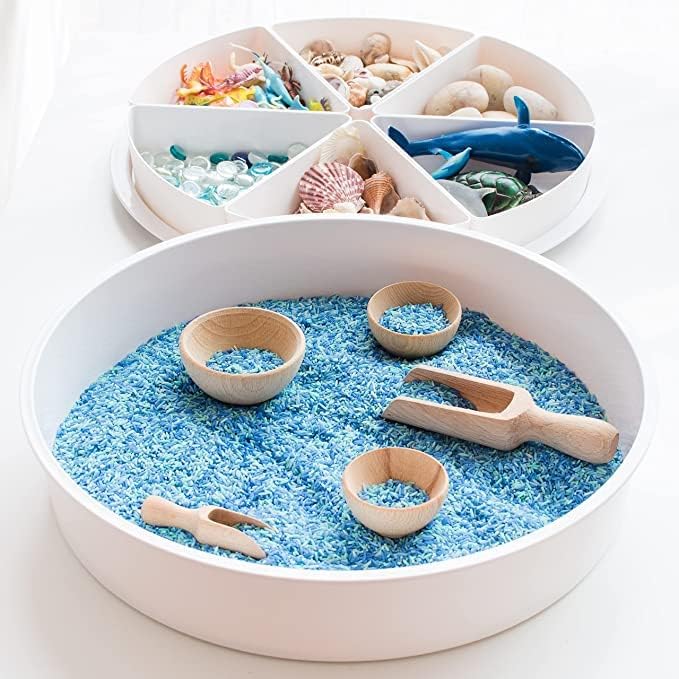When I first heard of Tuff Trays, I was a bit skeptical. The simple plastic tray, often used in construction, was being heralded as a breakthrough tool in early childhood development. I wondered if this could be another over-hyped educational fad. But, given the enthusiasm and confidence shared by educators and other parents, I decided to introduce it to my 3-year-old daughter, Mia. Looking back now, that decision turned out to be a game-changer in Mia's developmental journey.
When Mia first laid her eyes on her Tuff Tray, her eyes sparkled with curiosity. It was a large blank canvas, ready to take any form her imagination could conceive. We started simple, filling the tray with water and a few of her favorite waterproof toys. The first few sessions mainly involved splashing and giggling, but soon, I saw her exploring different ways to interact with the water, making waves, creating sounds, and observing the ripples.
Tuff trays provide limitless learning opportunities
As weeks passed, we experimented with various materials, textures, and themes. We used sand, rice, playdough, leaves, even jelly. Each material brought out a new aspect of Mia's explorative behavior. Her fine motor skills improved noticeably as she manipulated different materials. She became adept at picking up small grains of rice, molding playdough into complex shapes, and carefully constructing sand castles. Kinetic sand is also really a great medium to play with
The Tuff Tray also became a platform for us to connect on a deeper level. We'd spend hours playing together, creating imaginary landscapes, and inventing stories. I noticed that her communication skills were developing significantly during these interactive sessions. She started using new words to describe what she was experiencing and felt more comfortable expressing her thoughts and ideas.
Tuff Trays have helped Mia develop her language skills
In addition to language skills, the Tuff Tray also fostered her social skills. We often invited her friends to join our Tuff Tray sessions. The tray served as a medium for them to interact, share, and learn from each other. They learned to negotiate roles in their imaginative play, take turns, and respect each other's creative inputs. I noticed Mia becoming more confident in social situations, which was a huge step forward.
Perhaps the most notable change was the boost in her imaginative capabilities. The Tuff Tray became a space station one day, a dinosaur park the next, and a gigantic cake bakery the day after. Watching Mia completely immerse herself in these self-created worlds was an absolute delight. Her problem-solving abilities also seemed to improve as she faced challenges in her imaginative scenarios.
It wasn't always smooth sailing, though. There were days when Mia was not interested in the Tuff Tray. Some activities didn't resonate with her, and sometimes she just wanted to do something else. I learned that it's crucial not to force the Tuff Tray upon her but rather, to let her lead her learning journey.
In terms of practicalities, the Tuff Tray proved to be a boon. Its ease of cleaning and storage made it an ideal play resource. Although it was primarily used for indoor activities, we took it outside when the weather was nice. The Tuff Tray was versatile enough to fit into different spaces and situations.
As a parent, it's been an enlightening experience to observe how a simple tool like a Tuff Tray can provide such diverse learning opportunities. The shift in Mia's development since the introduction of the Tuff Tray has been incredible. It has become an essential part of her playtime, providing her with a platform to explore, learn and grow.
The Tuff Tray has proven to be more than just a fad. It has transformed our approach to play and learning. It's shown us how to create meaningful and enjoyable learning experiences at home. Mia's developmental progress, from her motor skills to her language and social abilities, have all been positively influenced by this versatile tool. I can confidently say that introducing the Tuff Tray to Mia was one of the best parenting decisions I've made.





Comments